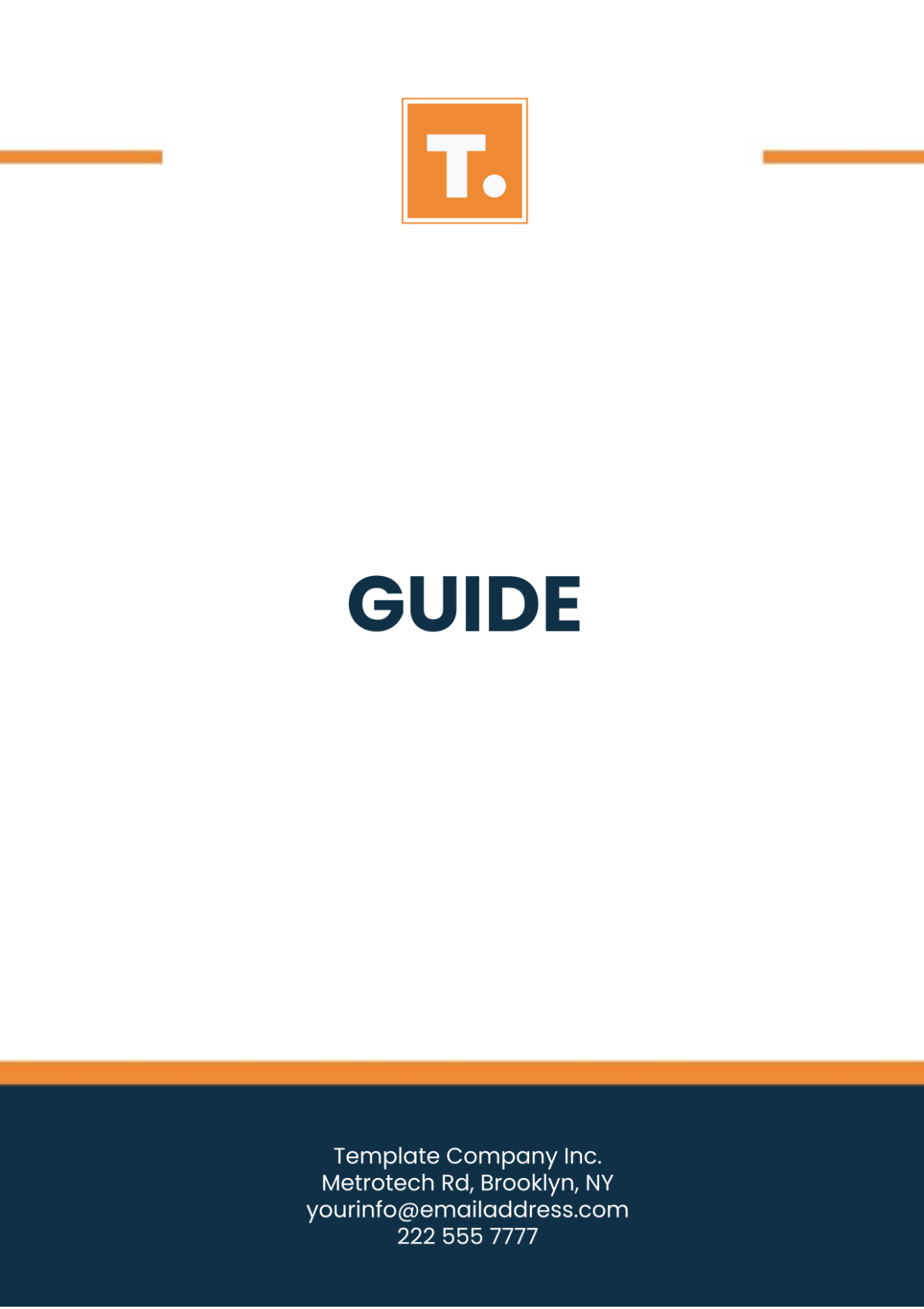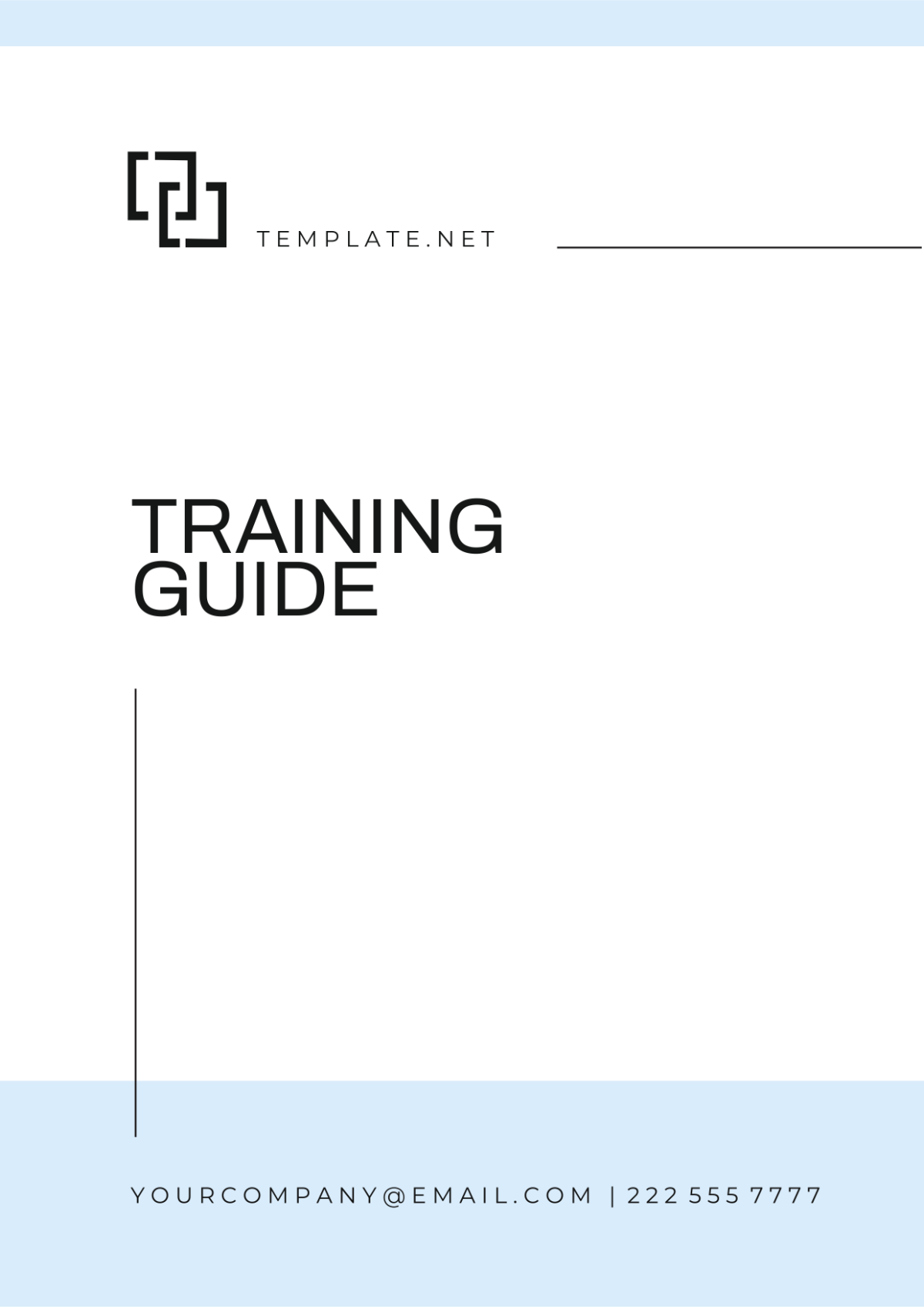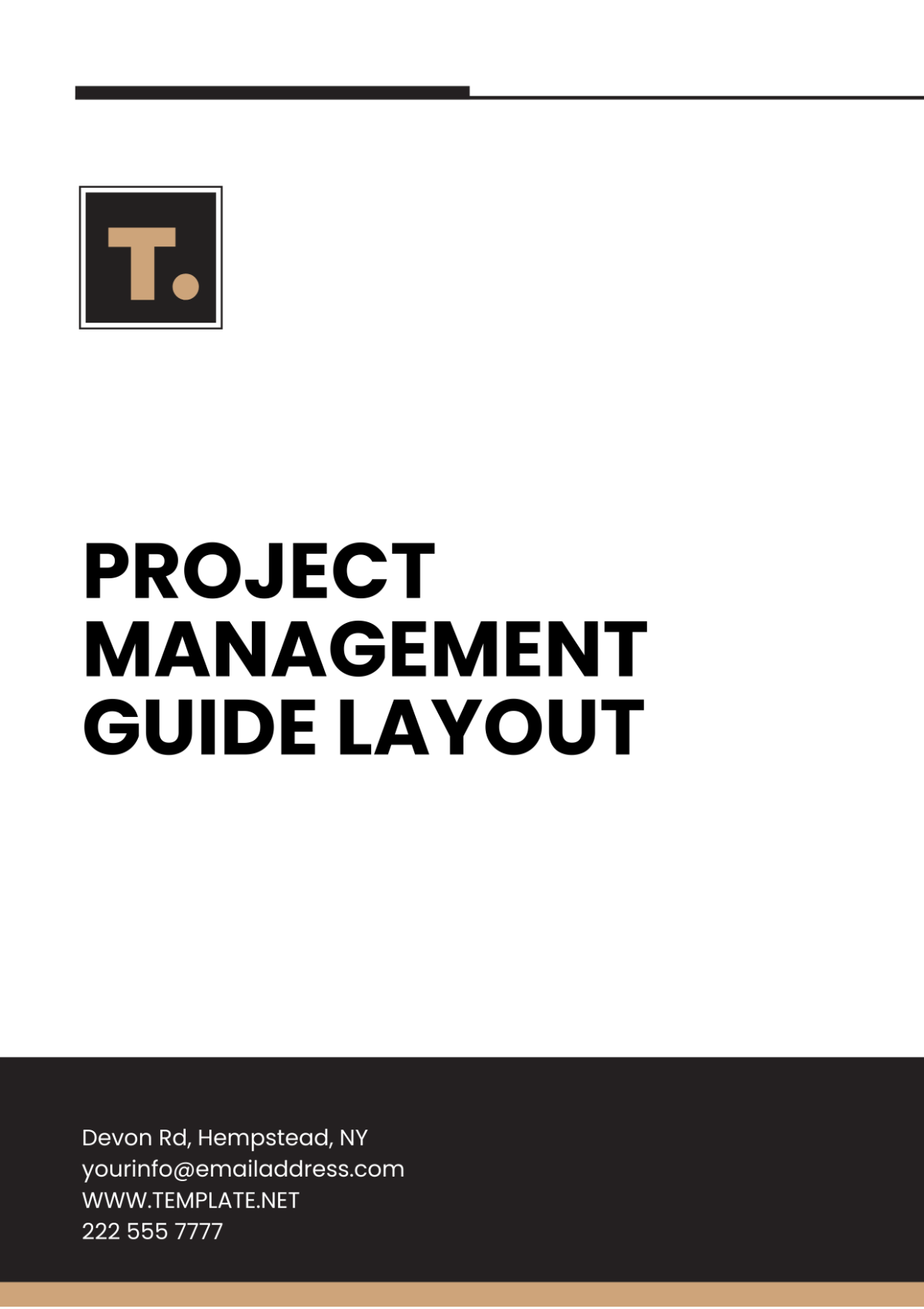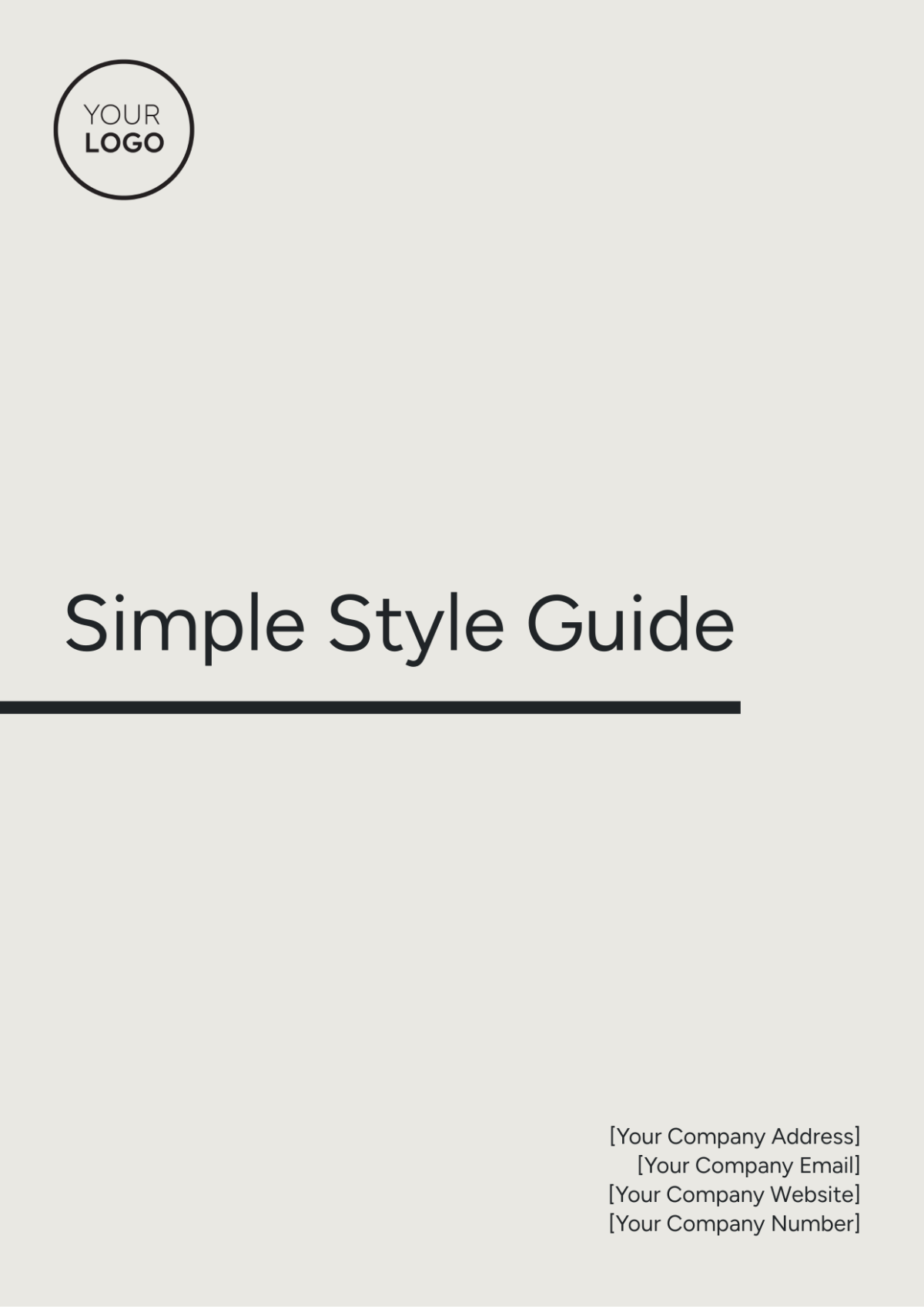Editorial Service Style Guide
I. Introduction
A. Purpose of the Style Guide
The Editorial Service Style Guide is an essential tool for maintaining consistency in all written materials produced by [Your Company Name]. It establishes standardized writing rules that help create clear, coherent, and professional content. This guide serves as a reference for everyone involved in content creation, ensuring that all communications adhere to the same tone, voice, structure, and formatting. By following this guide, we aim to strengthen our brand identity, improve readability, and enhance the overall effectiveness of our messaging.
Every piece of content—whether for internal communication, marketing materials, client-facing documents, or digital content—must reflect the values and standards of [Your Company Name]. Consistency not only creates a seamless experience for our audience but also builds credibility and trust in our brand.
The style guide ensures that all content creators, regardless of their role or location, follow a unified approach to writing, formatting, and presenting content. This uniformity is crucial for reinforcing [Your Company Name]'s identity and ensuring that all communications, both external and internal, align with our strategic goals.
B. Scope of the Style Guide
This style guide applies to every form of written communication produced by [Your Company Name]. It is to be followed by everyone involved in creating, reviewing, and publishing content. Specifically, it covers:
Website content: including landing pages, blogs, FAQs, and product descriptions. Clear, concise, and optimized content for online visitors is crucial for enhancing the user experience and supporting our digital marketing goals.
Marketing materials: such as brochures, flyers, email campaigns, advertisements, and newsletters. These documents should not only inform but also engage our audience, encouraging action and brand loyalty.
Reports and white papers: technical documents, case studies, research reports, and executive summaries. These materials should present detailed analysis and insights in a manner that is both accessible and authoritative.
Internal communications: emails, memos, and company newsletters. These communications should foster a collaborative and transparent work environment while ensuring that all employees are informed and aligned with company goals.
Social media posts: for platforms such as Facebook, Twitter, LinkedIn, and Instagram. The tone and style on social media should be dynamic, engaging, and adaptable to various audiences while maintaining professionalism.
Press releases: announcements and news releases intended for the media. Press releases must adhere to journalistic standards, providing clear, factual, and newsworthy content.
This guide provides detailed instructions on grammar, tone, formatting, and other editorial aspects, ensuring that all materials are aligned with [Your Company Name]'s professional standards.
C. Updates and Revision Schedule
The Editorial Service Style Guide is a dynamic document that will be reviewed and updated annually. Our commitment to continual improvement means we will adapt to industry changes, feedback from our teams, and new technologies. The guide will be updated by the Content Manager and approved by senior leadership.
The next revision of this document will take place in January [2051]. After the initial revision, the guide will be reviewed every [12 months] to reflect new trends, tools, and business needs. All employees will be notified of updates, and training will be provided as necessary to ensure full compliance.
The process of updating the guide will involve consultation with various departments, including marketing, communications, and design, to ensure that all aspects of content creation remain relevant. Moreover, input from external industry experts may be solicited to reflect best practices in content strategy and editorial standards.
II. Editorial Standards
A. Tone and Voice
1. Brand Voice
The voice of [Your Company Name] should consistently project professionalism, authority, and approachability across all written content. It is essential to maintain the following principles to build and reinforce our brand's voice:
Professionalism: Our content should always convey expertise and reliability. Whether we’re discussing complex technical topics or general services, the writing should reflect deep knowledge and authority. We should be viewed as a trusted source of information in our industry.
Approachability: We believe in making our expertise accessible. The language should be clear and inviting, ensuring the audience feels comfortable engaging with our content. While we aim for professionalism, we also want to build a connection with our readers, making them feel valued and understood.
Confidence: While our tone should be friendly, it should also demonstrate confidence in our products, services, and capabilities. We should write in a way that builds trust and instills confidence in our audience. Our confidence should be evident without being boastful, focusing instead on the value we provide.
The brand voice should always remain consistent across all platforms. Whether we’re writing for a corporate report or a quick social media update, the voice should reflect our core values—professionalism, confidence, and approachability—at all times.
2. Adaptability
While the voice remains consistent, the tone should be adjusted based on the target audience and context. For example:
Marketing materials require a more engaging and persuasive tone, focusing on the benefits and emotional appeal of our products or services. It is essential to craft messages that resonate emotionally with the audience, offering them a compelling reason to take action.
Internal communications should be clear and supportive, ensuring that the message is direct but friendly and encouraging to team members. The tone should foster collaboration, transparency, and a sense of community within the company.
Reports and white papers should maintain an objective and formal tone, focusing on data, research, and analysis to provide a factual presentation. Although this content may be more technical, it should still be accessible to a wider audience by explaining complex concepts in simple terms.
Each piece of content should be tailored to its purpose and audience while maintaining [Your Company Name]'s voice as the foundation. This ensures that our content speaks to the right people in the right way.
B. Grammar and Usage
1. Standard Rules
Our content should adhere to the rules of American English grammar, including but not limited to:
Subject-Verb Agreement: Ensure that the subject and verb of a sentence are in agreement. For example, "The company is expanding," rather than "The company are expanding."
Serial Comma: Use a comma before the conjunction in a list of three or more items. For example, "We offer high-quality, user-friendly, and cost-effective services."
Active Voice: Use active voice whenever possible to create more direct and engaging sentences. For example, "Our team delivers exceptional results" instead of "Exceptional results are delivered by our team."
The use of proper grammar, punctuation, and syntax enhances the professionalism of our content. It ensures clarity and minimizes the risk of miscommunication. At [Your Company Name], we uphold these standards across all types of content, whether formal or informal.
2. Common Errors to Avoid
Writers should be particularly vigilant in avoiding these common errors:
Misuse of Homophones: Pay close attention to words that sound similar but have different meanings (e.g., their/there/they’re, its/it’s, affect/effect). Even subtle errors like these can undermine the credibility of the content.
Run-on Sentences: Break up long sentences into smaller, digestible parts to ensure clarity. Sentences that are too long can confuse readers and make it difficult for them to follow the main point.
Overuse of Passive Voice: Passive constructions can make writing weak and unclear. Whenever possible, use active verbs that make the action clear. For example, instead of writing "The project was completed by our team," write "Our team completed the project."
3. Acronyms and Abbreviations
First Use: Always spell out the full term on the first mention, followed by the acronym or abbreviation in parentheses. For example, "Search Engine Optimization (SEO) is crucial for online marketing."
Subsequent Uses: After the first mention, use the acronym without the parentheses. For example, "Effective SEO can improve search rankings."
Clear communication is essential, and using acronyms or abbreviations correctly helps maintain professionalism without sacrificing readability.
III. Content Creation Process
A. Planning and Research
Before any content is created, it is crucial to define its purpose and scope. This involves:
Identifying the Target Audience: Understanding who the audience is, their needs, and their expectations is fundamental. Tailoring content to meet the specific interests and concerns of the audience ensures it is both relevant and engaging. For example, if writing for industry professionals, the content may be more technical and detailed, while content for the general public should be simplified and more accessible.
Conducting In-Depth Research: Research is vital for ensuring the accuracy and credibility of the content. Writers must gather information from reliable sources, cross-reference facts, and validate any claims with credible evidence. Conducting thorough research is especially important for technical documents and white papers, where accuracy is crucial.
Creating a Detailed Outline: Organize the key points, arguments, or ideas in an outline before drafting the content. This helps ensure that the message flows logically and that all necessary points are covered. An outline also serves as a roadmap for the content, helping writers stay on track and avoid unnecessary tangents.
A well-planned and thoroughly researched piece of content is the foundation of effective communication. The planning phase sets the stage for content that is both informative and impactful.
B. Writing Guidelines
1. Clarity and Conciseness
Clarity is paramount in ensuring that the content is easily understood by the target audience. Here are some key points to follow:
Avoid Unnecessary Jargon: Use simple, clear language unless specialized terms are necessary. For instance, “optimize” instead of “synergize.” Jargon should be used sparingly, and only when it is understood by the target audience.
Short Sentences: Keep sentences between [15-20] words for readability. Long sentences can confuse readers and dilute the impact of the message. Shorter sentences make the content more digestible and easier to comprehend.
Be Direct: Avoid overly complex sentence structures. For example, instead of writing “In the event that the client does not approve the proposal,” write “If the client does not approve the proposal.” Clear and concise language is more effective and efficient in communicating the message.
2. SEO Best Practices
SEO (Search Engine Optimization) is critical for ensuring that content ranks well on search engines. The following practices should be followed:
Use of Primary Keywords: The primary keyword should be included in the title, headers, and within the first [100] words of the content. This helps search engines understand the topic of the content and improves the chances of ranking for that keyword.
Secondary Keywords: Use secondary keywords naturally throughout the article to avoid keyword stuffing, which can negatively impact SEO rankings. Keywords should be incorporated in a way that feels organic, enhancing both the content’s readability and SEO performance.
Meta Descriptions: Write compelling meta descriptions under [160] characters that include the primary keyword, as these are often used as the snippet in search engine results. A well-written meta description can significantly improve the click-through rate from search results.
3. Inclusive Language
At [Your Company Name], we strive to be inclusive and respectful in all written communication.
Gender-Neutral Language: Use gender-neutral terms such as “they” or “their” when the gender of the subject is unknown or irrelevant. This ensures that our content is respectful and avoids assumptions about gender.
Inclusive Terminology: Use language that includes all groups, avoiding terms that could be perceived as discriminatory. For instance, replace “manpower” with “workforce” or “staff.” Inclusive language is essential for creating an environment of respect and diversity.
IV. Editing and Proofreading
A. Levels of Editing
Editing is a multi-layered process aimed at enhancing the quality of the content. At [Your Company Name], we understand that editing is not simply about finding grammatical errors—it is about shaping the content to be its best version, ensuring clarity, consistency, and alignment with the company’s standards. There are three key levels of editing, each focused on different aspects of the content.
1. Developmental Editing
Developmental editing is the first and most comprehensive stage of the editing process. This step is focused on the big picture elements of the content and involves evaluating its structure, organization, clarity, and overall purpose. Developmental editing helps refine the content to ensure that it fully supports its intended message and goals.
The developmental editor will review whether the content flows logically, whether all key points are adequately covered, and whether the tone and voice align with the target audience. This step might involve rewriting or reorganizing entire sections of the content. Key tasks include:
Reorganization: If the content lacks logical flow, the editor may suggest moving paragraphs or sections to improve the sequence and readability.
Consistency of Message: Ensuring that the overall message remains consistent, particularly if the content contains conflicting ideas or overly complex jargon that could confuse the reader.
Clarity and Focus: Checking whether the main argument or purpose of the content is clearly presented from start to finish. This often involves eliminating tangents, repetitive phrases, and irrelevant sections.
Structure and Formatting: Ensuring that the content adheres to a coherent structure. For example, a technical report should have clearly defined sections like Introduction, Methodology, Findings, and Conclusion. Developmental editing ensures that these structures are logically set up.
Developmental editing is an essential step that prepares the content for subsequent, more detailed editing. By the end of this process, the content should have a clear and focused purpose, organized in a way that makes it easy to follow.
2. Copyediting
Once the developmental editing phase has been completed, the content moves on to copyediting. Copyediting focuses on improving the language, style, and mechanics of the content. This phase ensures that the content adheres to [Your Company Name]’s Editorial Service Style Guide, offering consistency and accuracy in language, tone, and structure.
Key tasks in copyediting include:
Grammar and Syntax: Ensuring all grammar rules are adhered to, such as subject-verb agreement, correct tense usage, and sentence structure.
Clarity and Precision: Ensuring that the content is clear and precise. Any ambiguous language or unclear expressions are corrected to improve reader understanding.
Consistency in Style: Copyediting focuses on ensuring consistency across all written materials. This includes ensuring the correct use of punctuation, formatting, and terminology. The editor will check for consistency in titles, headings, and any other content that requires uniformity (e.g., the use of "team" vs. "staff").
Tone and Voice Alignment: Ensuring that the tone and voice match the specified brand style (professional, approachable, confident, etc.).
Fact-Checking and Citations: Copyeditors are responsible for verifying that facts are accurate and that all sources are properly cited.
Eliminating Redundancies: Identifying and removing repetitive phrases or unnecessary words that add no value to the content. This helps tighten the writing and ensures that every word serves a purpose.
The copyediting process is about enhancing the quality of the writing while ensuring that the content conforms to the company’s standards and is error-free.
3. Proofreading
Proofreading is the final step in the editing process, and it focuses on finding and correcting any minor errors that might have been missed in previous stages. This includes checking for spelling, punctuation, and formatting issues that can affect the quality and professionalism of the content.
Proofreading involves:
Spelling and Typographical Errors: Ensuring that every word is spelled correctly. This is particularly important for proper names, technical terms, and any other specialized vocabulary that could be prone to spelling mistakes.
Punctuation: Ensuring that punctuation marks are used correctly, especially commas, periods, quotation marks, and apostrophes.
Formatting Issues: Checking that the document's layout adheres to the company's standards for font size, margins, and paragraph alignment.
Consistency in Headings and Subheadings: Ensuring all headings are styled consistently, using the correct hierarchy and formatting as specified by the style guide.
Hyperlinks and Citations: Ensuring that all hyperlinks are active and correctly formatted, and that references or citations are correctly applied in the appropriate style (e.g., APA, Chicago).
Proofreading ensures that the content is polished and ready for publication. At this stage, the focus is on eliminating any last-minute errors that could undermine the professionalism of the piece.
Editing Level | Focus Areas | Example Actions |
|---|---|---|
Developmental | Structure, flow, and content alignment | Rearrange sections, add transitions, remove redundancies |
Copyediting | Grammar, tone, consistency, and style | Correct sentence fragments, ensure consistency in format |
Proofreading | Spelling, punctuation, formatting errors, and clarity | Check for typos, verify headings are aligned, ensure all hyperlinks are active |
V. Branding and Style
A. Logo and Visuals
Branding is a critical part of our content, and ensuring that [Your Company Name]'s logo is presented correctly is essential for consistency across all materials. The logo should always appear in its designated color version, unless color reproduction is not feasible, such as in black-and-white print materials. The visual representation of the logo should never be distorted or altered in any way.
Here are the key guidelines for logo usage:
Placement: For formal documents and marketing materials, the logo should appear in the top right corner of the document. For brochures, presentations, and digital media, the logo should also be placed in a consistent and visible location, such as the header or footer.
Size and Spacing: Ensure that the logo maintains its integrity and does not become too small to be legible. There should also be adequate white space around the logo to avoid crowding other elements. At no point should text, graphics, or other logos overlap with [Your Company Name]'s logo.
Proportions: The logo should always be used in its original proportions. It should not be stretched or compressed. If resizing is necessary, the logo should be scaled proportionally to maintain its aspect ratio.
Using the logo consistently and correctly helps reinforce brand identity and ensures that our visual presence remains strong across all forms of communication.
B. Color Palette
At [Your Company Name], we carefully selected a color palette that reflects our brand’s core values—professionalism, trust, and clarity. The following colors are the official brand colors for all written materials, digital content, and marketing collateral:
Primary Colors:
Blue (#0033CC): This deep blue is the cornerstone of our brand. It symbolizes trust, professionalism, and stability. It should be used prominently in headings, backgrounds, and accent details.
White (#FFFFFF): White represents clarity, simplicity, and openness. It serves as the background color for most of our digital and print materials, providing contrast and enhancing readability.
Secondary Colors:
Gray (#808080): Gray complements the primary colors and can be used for secondary text or as a background color in charts or tables. It evokes neutrality and sophistication.
The use of our color palette should be consistent across all content to help maintain the brand's visual identity.
Primary color usage: The blue color should be the most dominant color in our materials, particularly for headlines, buttons, and calls to action.
Secondary color usage: Gray is used sparingly, primarily in less prominent text elements like captions or subheadings. White is used primarily for backgrounds, ensuring the content remains clean and readable.
Here’s an overview of our color usage:
Color Name | Hex Code | Usage |
|---|---|---|
Blue | #0033CC | Primary color for titles, buttons, and accents |
White | #FFFFFF | Background color and text contrasts |
Gray | #808080 | Secondary text, borders in graphics, and background elements |
C. Typography
Typography plays a significant role in reinforcing the visual identity of [Your Company Name]. The fonts used should be clear, modern, and easy to read, ensuring readability and brand consistency.
At [Your Company Name], we use the following fonts:
Primary Font (Body Text): Arial (12pt)
Arial is a clean, sans-serif font that offers high readability across both print and digital content. It is ideal for body text, captions, and any other long-form content. Arial’s simplicity makes it versatile and easy on the eyes, enhancing readability.
Secondary Font (Headings): Calibri (14pt, bold)
Calibri is a modern sans-serif font that pairs well with Arial. It is used for headings and subheadings to provide a clear visual hierarchy. The bold weight of Calibri helps create emphasis and allows headings to stand out, improving the structure of the content.
In terms of font usage:
Body text should be set in Arial (12pt) to maintain readability across all devices and formats.
Headings and subheadings should use Calibri (14pt, bold) to create a clear distinction from the body text, helping readers navigate the content more easily.
Proper typography ensures that all content maintains a cohesive and professional appearance, reinforcing [Your Company Name]’s brand identity.
VI. Review and Approval
A. Peer Review Process
At [Your Company Name], we believe in a collaborative approach to content creation, which is why all written content must undergo a peer review process before being finalized. Peer review ensures that content is accurate, relevant, and aligns with company goals.
The peer review process should involve:
Review by a colleague from a different department or team to ensure that the content is relevant and clear.
Incorporating feedback into the content to improve its quality. Peer review is an opportunity to refine ideas, clarify points, and ensure that the content resonates with the intended audience.
Multiple rounds of feedback: If needed, the content can go through multiple rounds of peer review to ensure it meets all expectations. The more time spent in this process, the better the content will be. Peer review not only helps to catch mistakes but also brings fresh perspectives that may improve the final product.
The peer review process is essential for producing high-quality content that aligns with [Your Company Name]’s standards.
B. Approval Hierarchy
Once the peer review has been completed, the content moves to the final stage of approval, which ensures that it aligns with the company’s objectives and is ready for publication or distribution. The approval process consists of:
Writer Submits Draft: The writer submits the initial draft of the content to their immediate supervisor for review.
Supervisor Review: The supervisor assesses the content for relevance, clarity, and alignment with the content's objectives. The supervisor provides feedback, which may include suggestions for revision or clarification.
Final Approval: Once the supervisor's feedback is incorporated, the content is sent to the Content Manager for final approval. The Content Manager ensures that the content adheres to all branding, grammatical, and editorial standards before approval.
This multi-step process ensures that the final piece of content is polished and consistent with [Your Company Name]'s objectives and branding.
VII. Accessibility Standards
A. Compliance
At [Your Company Name], we prioritize accessibility to ensure that all individuals, regardless of disabilities, can engage with our content. We are fully committed to Web Content Accessibility Guidelines (WCAG) 2.1 AA standards, ensuring that our content is usable by all.
Key accessibility features include:
Alt Text for Images: Every image used in our content must include alternative (alt) text that accurately describes the image. This helps users with visual impairments who rely on screen readers.
Text Contrast: We ensure that there is sufficient contrast between text and background colors to accommodate those with vision impairments. For example, using dark blue text (#0033CC) on a white background (#FFFFFF) offers optimal contrast.
Multimedia Alternatives: For videos or audio content, we provide transcripts, captions, or other text alternatives. This ensures that content can be consumed by users with hearing impairments or those in environments where they cannot listen to audio.
Our commitment to accessibility ensures that no one is excluded from engaging with our content.
B. Readability
We also focus on the readability of our content to ensure it is easy to understand and navigate by all users. This includes:
Font Size: The body text should be at least 12pt for legibility, and larger text should be used for headings and subheadings to improve structure.
Line Spacing: We use a line height of 1.5 for body text, as it significantly improves readability by providing enough space between lines of text.
Short Paragraphs: Paragraphs should be kept concise, with each paragraph ideally not exceeding [150] words to avoid overwhelming the reader.
Following these accessibility and readability standards ensures that our content remains inclusive and usable by all individuals.

















































